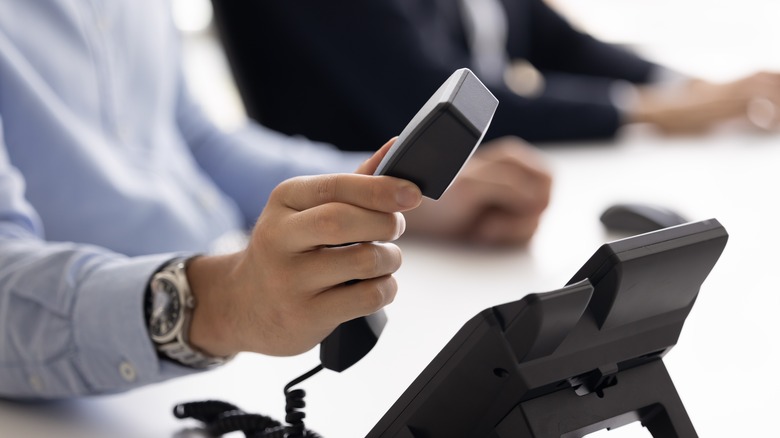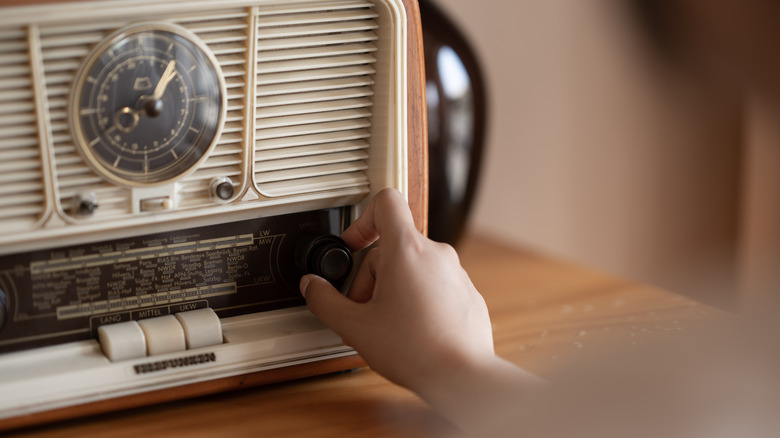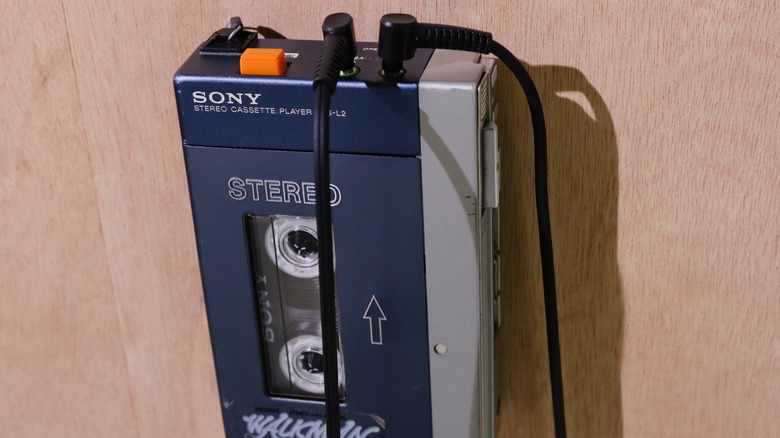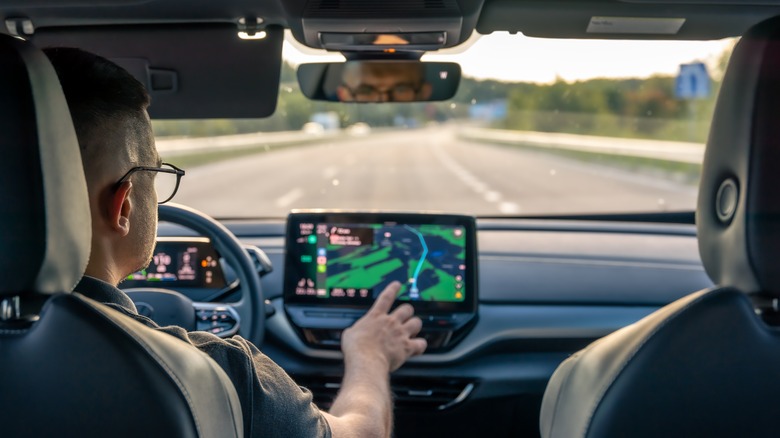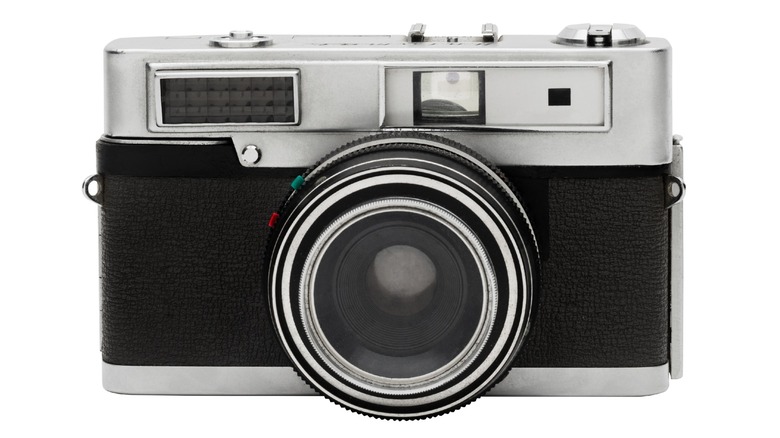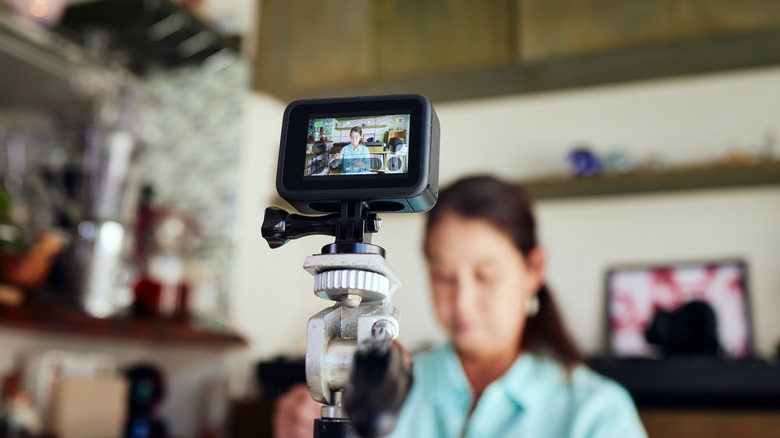13 Gadgets That Changed The Course Of History
It's crazy to think that we could be just one invention away from having a drastically different future. And yet, that's exactly why we have our current reality. For centuries, people have been inventing technology and devices that have ultimately changed the way we live. We've seen evidence of this in healthcare, like the use of disinfectants to prevent the spread of germs and vaccines that prevent serious illnesses. Technology continues to shape our future, and the next big thing will most likely owe its existence to something that came before it.
Some gadgets are so essential that they change the entire course of history. Can you imagine what life would look like without the internet? So much of what we do depends on a digital connection. The same goes for refrigeration and the way we eat and procure food, or the way we travel. But these life-changing inventions don't always take up a massive stage. Sometimes, they're small enough to fit in your hand yet powerful enough to improve your everyday life. Let's explore 13 gadgets that changed history and daily life as we once knew it.
Smartphones
Years before the smartphone, we had cell phones. They gave us a way to stay connected with loved ones while on the go. But smartphones changed what being "connected" looks like, giving us not only the ability to call or text but also to take the entire internet with us. The smartphone has become a pocket-sized personal computer, giving us access to email, social media, online shopping, and tools like calculators and heart rate monitors. One device has essentially replaced dozens, making it one of the most valuable tools you own.
The iPhone wasn't the first smartphone, but it expanded the idea of what smartphones could be and how they function. In true Apple fashion, it made the smartphone sleek and accessible. Touchscreens eliminated the need for slide-out keyboards, physical buttons, and scrolling wheels. Apple created an app for nearly everything and backed it up with a now-iconic marketing campaign. It was a major step that changed the way we do everything, from how we communicate to how we handle everyday tasks. At this point, it would be hard to go back to traditional flip phones (though there is a small faction of people who are doing just that).
Televisions
The television quickly became the heart of the home in the 1930s and 1940s, and it continues to hold a place in modern households. TVs created a direct connection to the outside world, adding the visual element that radio lacked. People could see the news they had previously only heard on the radio and essentially invite their favorite actors into their homes. As televisions became cheaper and more accessible, they evolved into something that brought families together.
The basic television has undergone several iterations over the years. Once expensive, boxy, heavy, and requiring a team to lift and move, TVs are now flat enough to mount on the wall, lightweight enough to move by yourself (in many cases), and cheap enough that you don't have to spend several paychecks on one. By comparison, one of the first commercially available televisions was the RCA TRK-12, which cost $600 (about $11,000 in today's money). TVs have progressed alongside other technologies to offer color imagery, remote control operation, and now, internet connectivity.
Console gaming systems
The gaming industry is currently worth a whopping $455 billion, but it would likely only be worth a fraction of that if the console gaming system had never been invented. Console gaming systems brought video games into homes, starting with the Magnavox Odyssey in 1972. Arcade video games had been captivating gamers for a few years already, and the Odyssey created a new way to enjoy them. Atari followed in 1975 with its now-iconic game Pong, then later released the Atari 2600 console in 1977. These systems paved the way for handheld electronic video game systems and, later, new consoles like Nintendo, Sega, and PlayStation that used the latest technology of the time.
Over time, processing power and graphics have improved, and game libraries have expanded. Massive gaming franchises like Fortnite and Minecraft now overlap between consoles and PCs. People can play console video games with others from all over the world without leaving their homes. Even small improvements, like 3D graphics and memory cards to save your progress in long games, have set today's console gaming worlds apart from its earliest days.
Personal computers
The way we live today would not be possible without the personal computer. What started as a niche device for nerds and businesses has become one of the most essential tools we use. In the United States, about 95% of households have at least one computer. In 1990, that figure was barely 15%.
John Blankenbaker's Kenbak-1 is widely regarded as the first personal computer. It didn't have a microprocessor and sold for about $750 per unit. The company sold only 40 units before it folded. The invention of the microprocessor gave the personal computer another fighting chance, helping to make them more affordable and broadening their use cases. Interest and technology kept building from there, with advancements like IBM's systems and Microsoft's MS-DOS making computers more accessible and user-friendly. Today, you can do just about anything with a personal computer. Most people use them in some form for work or entertainment or to complete daily tasks like checking their bank accounts or ordering merchandise.
Telephones
Before the telephone could fit in your pocket, it was mounted to a wall as a large, bulky apparatus full of electronics. And before that, people had to rely on delayed communications like telegrams and letters. They'd wait days or weeks to get a reply, and by the time they finally received a response, it was often old news. If a family member wrote to say they were coming for a visit, you might see them on your doorstep before you ever received their correspondence.
Telephones changed history by shortening the distance between people. Suddenly, the miles didn't matter anymore. People could speak to loved ones in real time, call businesses for local information, and stay in the know. They also laid the groundwork for other technologies that we enjoy today. The telephone walked so that smartphones, the internet, and global communications could run. It's a straight line of innovation that began with the simple idea of sending voice through wires. And while telephones look drastically different today from how they did back then, they still provide the backbone for real-time communications.
Radio
Before the invention of the radio, people mostly got their news from newspapers. This often meant having to wait until the next day to learn what had happened the day before. But radio transformed the way information traveled — it could now spread almost instantly. It gave individuals a real-time way to learn about breaking news and get entertainment piped directly into their homes.
This was a time before televisions were common in homes, so families often gathered around the radio to spend time together. Live radio shows were popular back then, with stations producing scripted programs complete with music and sound effects. Even President Franklin D. Roosevelt leaned into radio's power with his fireside chats, which made citizens feel as though he were sitting in their living room. Later came advertising opportunities for businesses, allowing them to speak to millions of people at once. It became a milestone moment for mass marketing and a boon for creative professionals. Despite the rise of the internet and its instantaneous information sharing, radio remains highly valued today.
Alarm clock
The alarm clock may seem simple, but there was a time when people had to find alternative ways to wake up in the morning — for example, by hiring a "knocker-up." This was a real job, where people would make their rounds to customers and use a stick to knock on doors or windows as a wake-up call. It was more popular in cities, where dwellings were close together and there were no chickens or roosters to get you up with the sun. Today, there are even unique alarm clocks that will make you want to ditch your smartphone alarm app entirely.
Alarm clocks have existed since the 15th century, but the need for them likely grew with industrialization. People were shifting to factory jobs and away from farming. Factories and industrial jobs had stringent demands for workers to show up on time, so the alarm clock became a must-have invention. It didn't rely on natural cues like sunrises and instead let individuals control when they wanted to wake each day. As a result, the labor force became more reliable, and students attended school more consistently.
Portable music players
You never had a chance of stuffing a phonograph or a hi-fi stereo in your pocket. But at some point, someone wanted to change that, and so began the era of portable music. Pocket-sized players like the Sony Walkman were made to let you bring your music anywhere you went. Before these devices, music was tied to a specific place, like your living room or your car. But when cassette players like the Walkman arrived, music became personal and mobile.
This invention reshaped culture as we know it. It wasn't uncommon to see joggers in parks with a Walkman on their hips and headphones on their ears. Students sported a similar look in libraries and classrooms. For the first time, people could bring their soundtracks into their daily lives. It made listening to and sharing music more accessible and constant. Music played a greater role in self-expression and socialization. People still enjoy portable music players today, now without the wires or physical media.
MP3 players
MP3 players are often seen as successors to Walkmans and Discmans, but they deserve their own recognition. Walkmans spurred the music culture we know today and made music portable and accessible. MP3 players took a different path by making music instant and media-free. Instead of lugging around cassette tapes or CD wallets, you could download individual songs or digitize your CD collection and store everything on one device.
The MP3 player ultimately redefined how we think about music and how we consume it. It created a shift in freedom and format that no other type of media player had before. Playing music on the go became even more convenient. You could jump from one track or artist to another without having to swap out media. There were no discs to get scratched and no tapes that could come unraveled. It also ushered in a wild west situation, where piracy became the norm and the music industry scrambled to curb illegal sharing. Ultimately, it set the stage for streaming services as we know them today.
GPS devices
GPS sounds like a modern invention, but it's actually been around since the 1950s. Scientists at MIT found that radio signals changed based on a satellite's location, which led them to realize they could track a satellite from the ground. This was the beginning of the GPS systems we know today, helping us find our way around Earth using satellites in the sky.
Before GPS devices, we had maps and atlases, a nostalgic car feature you don't see much of these days. And if you didn't have a GPS but had internet access, you could print pages of turn-by-turn directions from places like MapQuest. Car manufacturers began adding GPS systems to vehicles as early as the 1990s, typically built into the car's technology. They became outdated quickly, though, and didn't offer real-time information on road closures, traffic jams, or other delays. Standalone GPS devices were the next logical step, giving anyone the chance to use digital navigation even if they had an older car. These portable devices could go anywhere and were even useful for travelers on foot. Today, we use GPS in much more than cars: in phones, watches, tracking tags, and even pet trackers.
Cameras
Before photography, you had to paint or sketch the moments you wanted to capture. These kinds of memories weren't easy to make or keep. The camera changed that, ushering in a new era of record-keeping that gave us real glimpses into the past. Cameras provide a way to preserve reality, from facial expressions to scenery, exactly as they appear in a given moment.
With photography, history came alive. It's been on the front lines of battlefields and in homes through the ages. It's captured our culture's biggest events, creating new expectations of trust and transparency. Photographs gave people proof of what they'd seen and experienced, whether from their travels or everyday life. Anyone could become a storyteller and share their perspective with the world. It's a valuable tool that has taken multiple forms over the years, from large, bulky boxes with flashbulbs to disposable cameras and instant film, and now smartphones that rival the quality of professional cameras.
Video cameras
Video cameras brought motion to memory. They captured more of a story than just a moment in time. And just like still cameras, video cameras have seen their fair share of iterations through the years. Video technology has come a long way in quality since its introduction in 1888. Back then, video cameras couldn't record sound and used celluloid film to create moving images. Today, we have digital video cameras that can capture sound and image simultaneously and even allow edits to be made directly on the screen.
One of the biggest advancements in video technology was the Sony Betamovie BMC-100P. Introduced in 1983, this was the first time video cameras were made for the general consumer. People could create their own home movies and capture precious memories in a way that a regular camera couldn't. The camera included an onboard microphone and a fold-out screen — everything a person would need to make home movies. Users could record directly to a videotape and then pop the tape into a VCR for instant playback. Compared to other video camera units at the time, this one was more compact since it didn't require a separate camera and recorder.
Electron microscopes
The electron microscope might not be something you use every day (or ever, if you're not in science or healthcare), but it's a device that has profoundly influenced the way we live. Its invention opened up a hidden world that reshaped healthcare, and ultimately, the health of every person. The first electron microscope was created in 1931 and could magnify objects up to 400 times their original size. This gave healthcare professionals and scientists the ability to view microorganisms, cellular structures, and tiny biomolecules.
It forever changed the way we fight disease. Scientists could now see viruses like HIV and polio. Instead of guessing how pathogens behave, medical professionals could observe them in real time. Researchers could study how tumors grow and how bacteria interact with drugs. They gained a clearer window into how biomaterials affect the body and could then create effective solutions to stop or reduce their impact. Electron microscopes continue to shape modern healthcare, helping us fight illnesses with precision.





